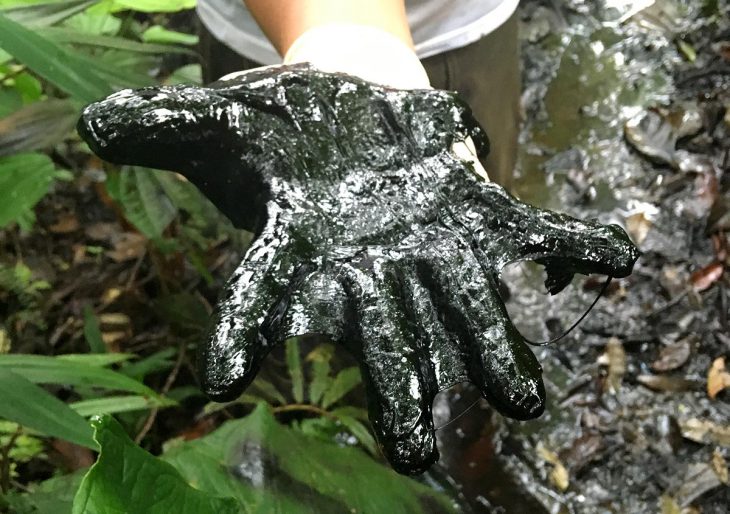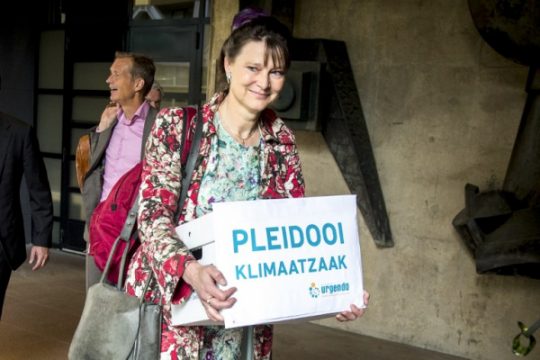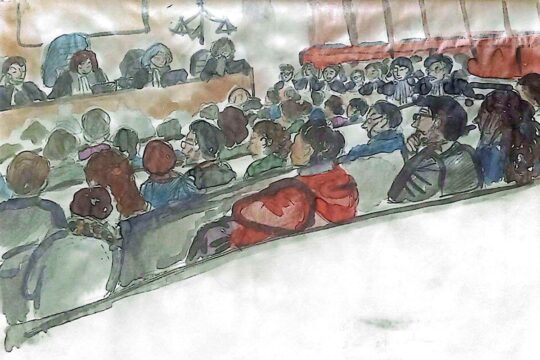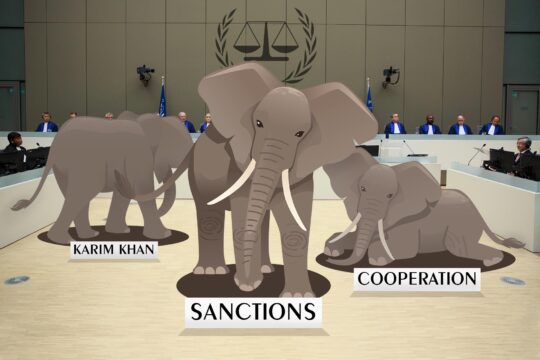Nobody stops in Lago Agrio unless they have to. This uninviting Ecuadorian town is dirty, humid and leaves the visitor with a general feeling of insalubrity. Located just a few kilometres from the Colombian border, it is often associated with drug trafficking, prostitution and other forms of organised crime.
Two main reasons drive people there, both linked to two conflicting economic activities. The first is fossil fuel extraction: the town was created in the 1960s as a base for Texaco’s oil extraction activities. Its name Lago Agrio translates as “Sour Lake.” The second is tourism: Lago Agrio is a starting point to access various lodges and tours to the Amazonian forest.
Today Lago Agrio is mostly associated with the unprecedented crude oil pollution, which has been destroying the area’s rivers and lakes, impacting the fauna, flora and indigenous population.
For those interested in this tragedy, Donald Moncayo, a non-indigenous inhabitant of the town who has lived with the contamination for decades, organises and leads “toxic tours”, which would fit perfectly in the dark tourism category after genocide and war crimes tours. These tours take journalists, activists and the accidental tourist to “the affected zone”, a selection of abandoned oil-well waste pits scattered in a large area of the rainforest and to the most affected indigenous communities.
Hundreds of contaminated sites
It is not an easy task to get to the sites of the disaster or to the indigenous communities. The journey to Lago Agrio requires a 10-hour bus drive from Quito. Ripped from the rainforest, which lost hectares to it, the road is almost entirely bordered by an extensive network of oil-carrying pipes, carrying the precious commodity to Quito and Esmeraldas, a major seaport of North-western Ecuador and the location of its biggest refinery.
There are hundreds of contaminated sites, scattered over an area of at least 450,000 hectares. Only a few can be seen within a day, and not all are easily accessible. Donald Moncayo selected four of them for the tailored toxic tour he accepted to give me, which also included a visit to a settlement of one of the communities affected, the Cofànes.
Moncayo works for an Ecuadorian organisation created in May 1994 to defend the interests of the people affected by the contamination. Today called UDAPT (Union of People Affected by Texaco), the organisation used to be the Amazon Defence Coalition (Frente de Defensa de la Amazonia). For years, Moncayo has been fighting for recognition of the suffering of communities affected by the pollution caused by the crude oil extraction conducted in the area since the 1960s.
The life before
It all started in 1965, when the Ecuadorian Military Junta then in power reportedly granted a concession of 1.4 million hectares to Texaco Petroleum Company for oil exploration and exploitation. The Junta was later replaced by the military government of Guillermo Rodríguez Lara. In 1972, the contract was reportedly renegotiated and the concession area reduced to about 480 000 hectares. Between 1974 and 1992, the Ecuadorian State progressively bought Texaco shares, until the State-owned company Petro Ecuador eventually became the sole shareholder and Texaco left the country in 1992.
Throughout this 30-year period, hundreds of oil wells were perforated and drilled. This type of operation requires an immense quantity of drilling fluid, a mixture of highly toxic products used as a lubricant in the process. Instead of using the expensive techniques available at the time to prevent their leaking into the environment, Texaco stored the toxic fluids in uncovered holes in the ground built with no protection.
880 “waste pools” spread over the 450,000 hectares of Texaco’s former operation zone.
According to a judgment delivered on 14 February 2011 by the Court of Lago Agrio, no less than 880 “waste pools” spread over the 450,000 hectares of Texaco’s former operation zone. Each of these pools has received gallons of waste from the exploitation of crude oil. In some cases, a draining system conducts this waste to the closest rivers. These unprotected waste pools, the attached draining system combined with the effect of the weather resulted in the contamination of the ground and water of the whole region.
Naturally, the local communities whose subsistence depended on the abundant resources of the rainforest were affected by the toxicity of the environment. One of the oldest surviving members of the Cofànes community, a grandmother whom Donald Moncayo introduced as Marina, can tell how her people used to live before the arrival of Texaco. Until then, there was no contact with “modern society” and no need for it, she said. No need for money. No need for “work”. For water, they had the forest rivers; for food, the forest fauna; and for health, the forest flora. The Cofànes territories covered a much larger surface, which had not been reduced or divided by mineral and oil extractions. When game or fish got scarce, the community would just move to another part of their territories to allow time for nature to take a break and renew its resources.
The life after
Today, the Cofànes territory has shrunk away to almost nothing. Extraction continues and so does the expansion of Lago Agrio. Deforested land becomes accessible for farming and sold to new settlers. Large areas of tropical forest keep disappearing to make way for more roads. There is no more game. Since the water is toxic, so is the fish, which cannot be eaten unless it was raised in a cleaned artificial pool. The rate of cancer and other kinds of infections is much higher than in other parts of the country.
The Cofànes traditional shaman himself died of a liver disease: I was told that he got addicted to the alcohol Texaco gave him to gain his community’s trust. He was Marina’s husband. Even if he had survived, his ancestral knowledge would probably have been powerless against this kind of curse. The Cofànes now depend on money. For most members of this community, the only option to survive is to look for work in the industry which has brought death to their family and destruction to their culture.
After the departure of Texaco from Ecuador in 1992, the Government took over the extraction. The Cofànes and other affected communities commenced proceedings against Chevron Texaco the year after, first in the United States, then in Ecuador before expanding to other jurisdictions, with multinational lawsuits and arbitrations. These complex legal disputes have lasted for more than 25 years and yet, to this day, no one has been found definitely responsible.
The 14 February 2011 judgment of the Court of Lago Agrio recognized the extent of the damage suffered and sentenced the multinational to pay a fine of 9.5 billion dollars
The 14 February 2011 judgment of the Court of Lago Agrio recognized the extent of the damage suffered and sentenced the multinational to pay a fine of 9.5 billion dollars in compensation and various remedies. This judgment was affirmed first by the Appellate Court of Lago Agrio on 3 January 2012, then by the National Court of Justice on 12 November 2013 and finally, by the Constitutional Court which dismissed Chevron’s appeal on exceptional grounds on 27 June 2018.
Private justice
Yet, on 30 August 2018 a decision of the Hague Permanent Court of Arbitration (PCA) invalidated this “final” judicial result. The tribunal analysed the proceedings and ruled that the appellate and constitutional courts had failed their obligations to perform a comprehensive review of both the facts and the law regarding the dispute. It invalidated the expert report on the “waste pools”, concluded in favour of Chevron and found inter alia there had been procedural fraud, judicial misconduct and ‘ghost-writing’ of the Lago Agrio judgment.
No further judicial remedy is available to either Ecuador or Texaco-Chevron to challenge this decision. It appears that a private arbitral decision can supersede a judgment ratified by all the national judicial instances of a sovereign State. Consequently, the prejudice suffered by the victims, not represented in these arbitration proceedings, will never be repaired. The law, which arguably should have been protecting those who lived in harmony with their environment, ends up guaranteeing the impunity of those responsible for its destruction.
Chevron-Texaco arbitration sets a dangerous precedent: in giving priority to the commercial interests of companies over the human rights of the affected communities
Indeed, as noted by Anna Berti Suman from Tilburg University, this arbitral decision sets a dangerous precedent: in giving priority to the commercial interests of companies over the human rights of the affected communities, it creates the risk that such proceedings be used to protect from accountability other powerful companies which, with the complicity of states, commit human rights violations and environmental crimes in the context of their lucrative mining or industrial activities.
Preventing more “toxic tours”
The example of Chevron Texaco in Ecuador highlights a wider issue: no international laws, international jurisdiction or international judicial mechanism exist for the investigation, prosecution and punishment of this type of conduct and the resulting damages. Yet, these conducts involve actors operating internationally and the resulting damages. And their impact is never confined within the borders of a single country.
In 2016 the Prosecutor of the International Criminal Court (ICC) issued a Policy Paper on case selection and prioritisation. She announced her intention to investigate destruction of the environment in peacetime that potentially constitutes crimes against humanity. Given the extent of the damage and the gravity of the impact on the population, the ICC could be one of the relevant fora for this kind of claims. But the ICC Prosecutor indicated that she can only consider environmental crimes if they are part of one of the four crimes in the Rome Statute, which does not provide for ecocide. And even for those, since the jurisdiction of the ICC is limited to “natural persons”, the prosecution of business or government-related crimes under international law would not be possible.
In a global context where the vast majority agrees to acknowledge that climate change is the most serious threat to humanity, many would argue that this has to change, and the sooner the better. Creating a new international mechanism or providing amendments to the existing ones could contribute to improving a situation already critical, particularly in light of the policies envisaged or already implemented by world leaders such as Donald Trump or Javier Bolsonaro, which may only lead to more “toxic tours”.
 MAUD SARLIEVE
MAUD SARLIEVE
Maud Sarliève is a lawyer and lecturer at the University of Paris-Ouest-Nanterre. She worked for the ECCC Office of Investigating Judges in Cambodia, for the EULEX Special Prosecutors in Kosovo and for a Defence team at the Special Tribunal for Lebanon.







